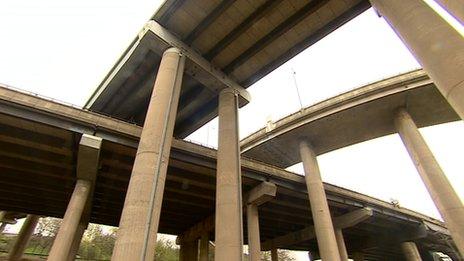Spaghetti Junction at 50: What lies beneath?
- Published
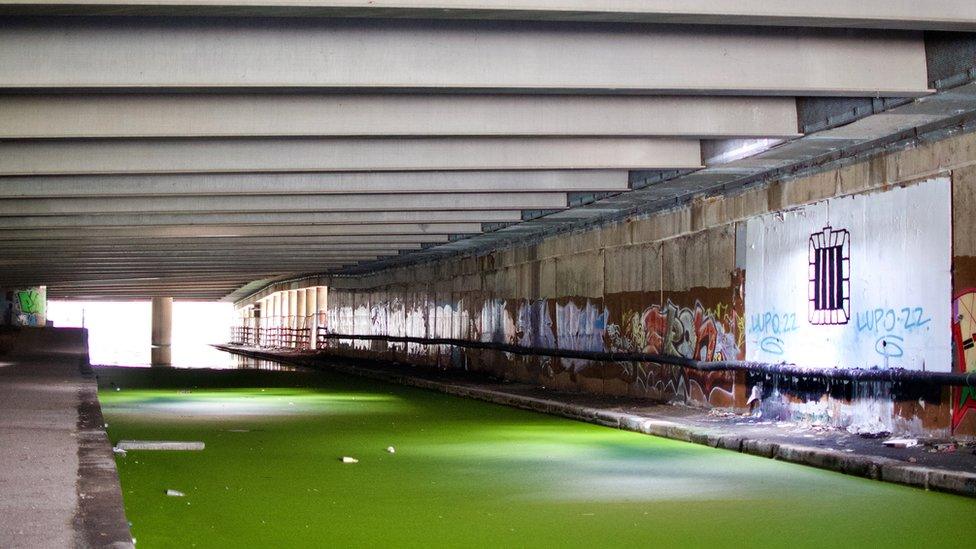
Street artists have been drawn to the tunnel walls under Spaghetti Junction for many years
The heavy sound of vehicles trundling overhead is impossible to ignore from beneath one of the UK's best-known concrete structures, which turns 50 on Tuesday.
Thousands of motorists travel through the Gravelly Hill Interchange on the outskirts of Birmingham at every hour of every day.
The vast majority of drivers on the M6 motorway know it simply as Spaghetti Junction - but how many know what lies underneath it?
There's a perhaps surprising amount of greenery, a labyrinth of heavily-painted subways and pathways, two railway lines, three canals and two rivers.
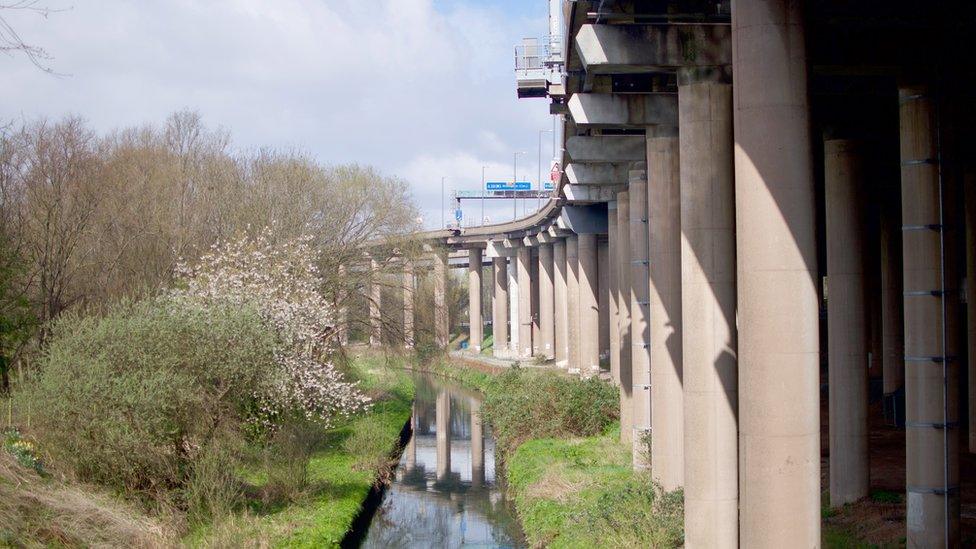
Underneath Spaghetti Junction, the River Tame meets the River Rea and Hockley Brook
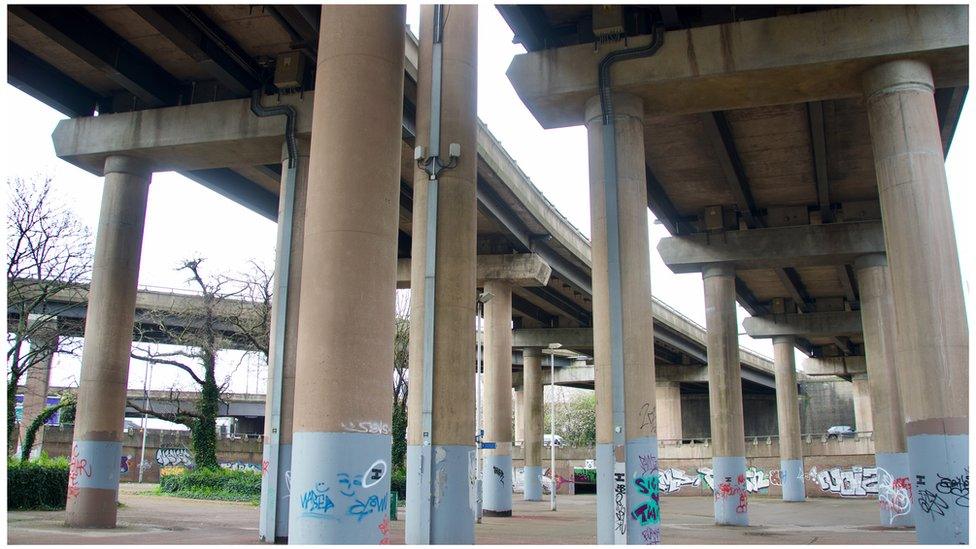
Spaghetti Junction has 559 concrete columns, reaching up to 80ft (24.4m) in the air
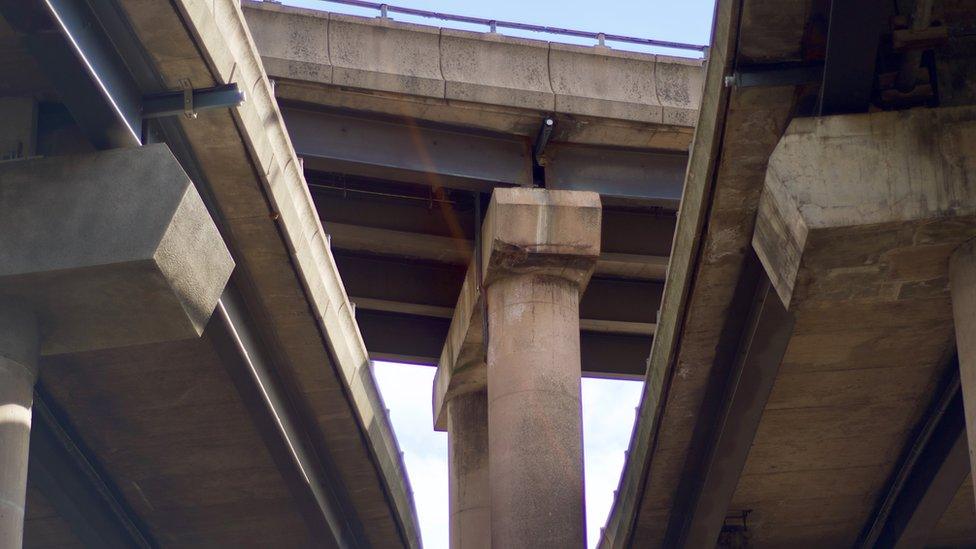
When Spaghetti Junction opened in 1972, a Burton upon Trent coach firm ran guided tours to see it

Spaghetti Junction appears in the Guinness Book of World Records, as "the most complex interchange on the British road system"
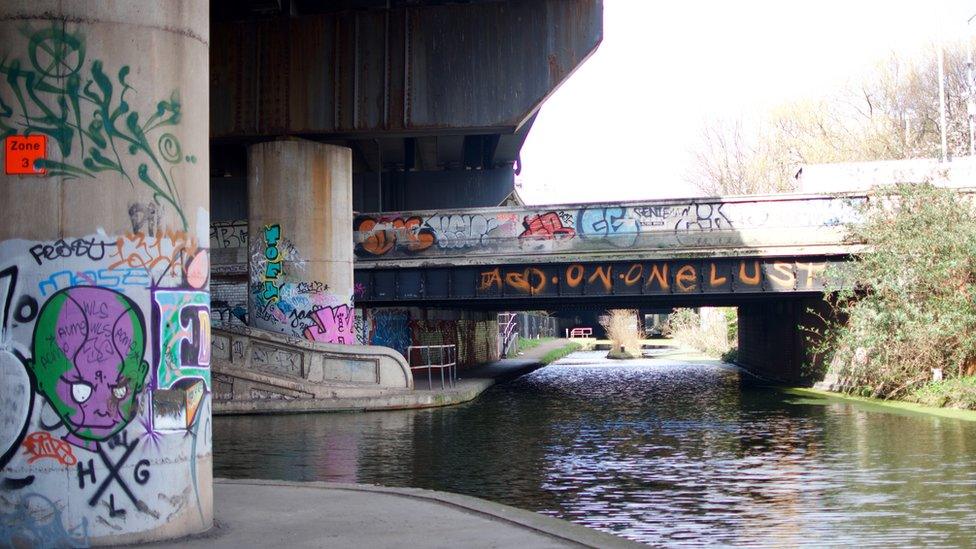
At Salford Junction, the Grand Union Canal, Birmingham and Fazeley Canal and Tame Valley Canal meet
Spaghetti Junction was given its name by newspaper reporter Roy Smith, who said that from the sky it looked like spaghetti on a plate.
Construction of Spaghetti Junction took some four years to complete at a cost of £10m.
The site covers 30 acres, serves 18 routes, and the pillars carrying Spaghetti Junction over the canal network had to be carefully placed to allow a horse-drawn narrow boat to pass underneath without fouling its towrope.
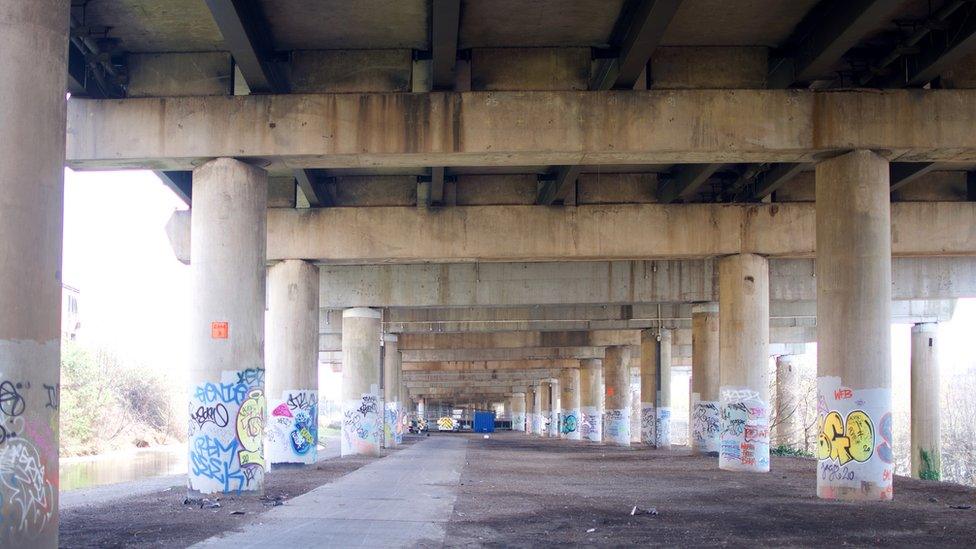
Camera crews have often used the wide open space under Spaghetti Junction for filming drama scenes
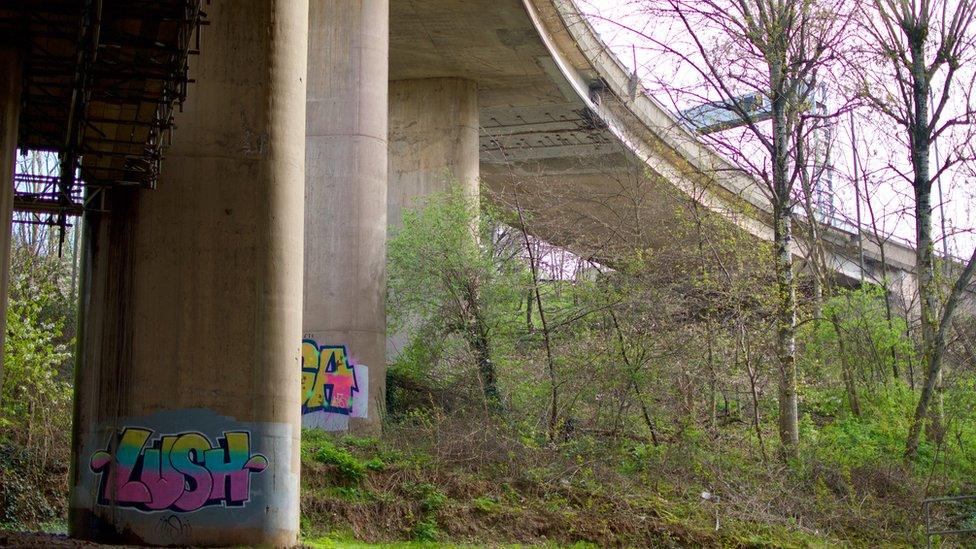
Spaghetti Junction featured as a scenic backdrop in the 1973 film musical Take Me High, in which Sir Cliff Richard plays a merchant banker

Routine repairs to the reinforced concrete structures have been ongoing since the late 1980s. The annual repair budget is upwards of £7m
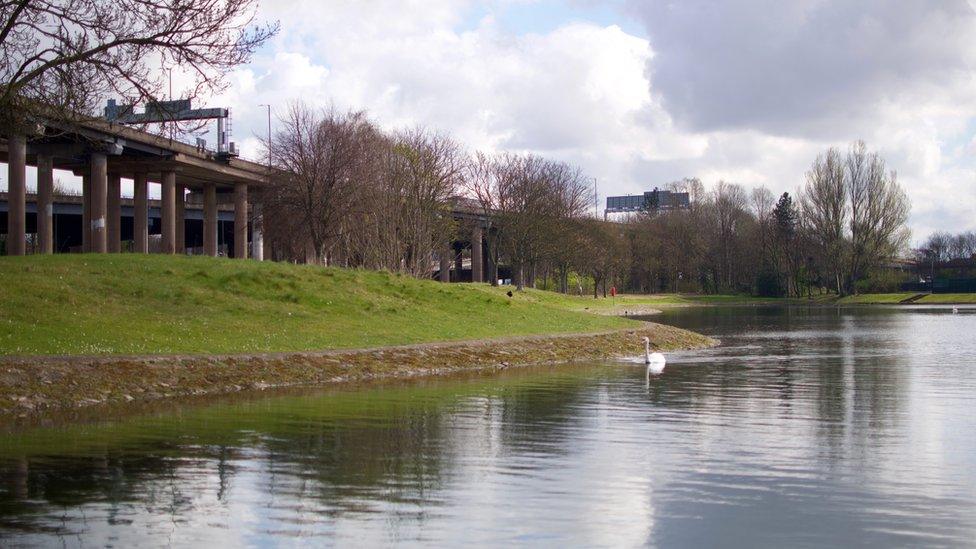
Spaghetti Junction has its own entry in the Oxford English Dictionary but you will never find that name on a road map
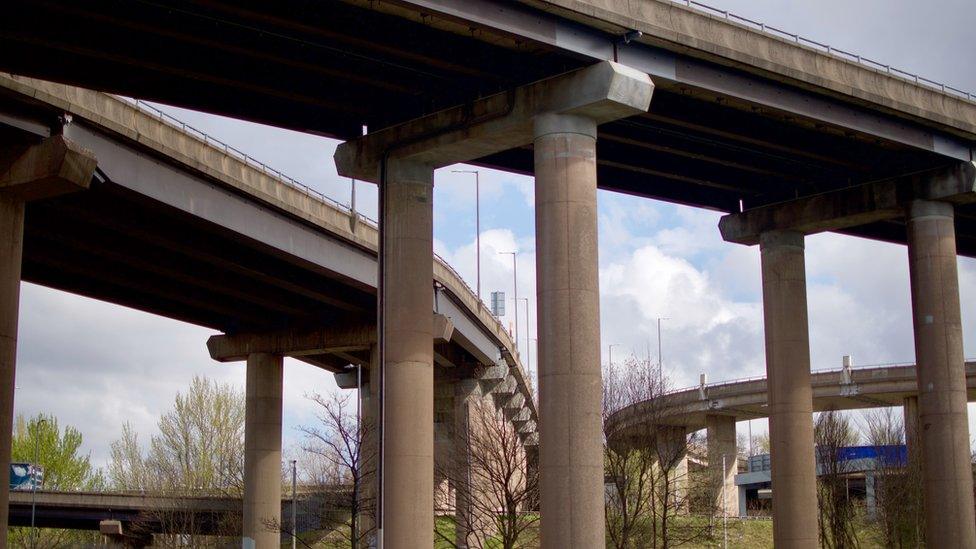
It's the centrepiece of the Midland Links project, which was designed to join up the M1, M5 and M6 motorways, as well as the A38(M) Aston Expressway
Spaghetti Junction is split across five different levels, and, according to National Highways, is designed to last 120 years.
And if you wanted to drive along every road at Gravelly Hill Interchange, you would need to travel about 73 miles.

Follow BBC West Midlands on Facebook, external, Twitter, external and Instagram, external. Send your story ideas to: newsonline.westmidlands@bbc.co.uk, external
Related topics
- Published17 January 2022

- Published24 May 2012

- Published30 March 2012
